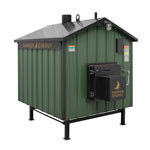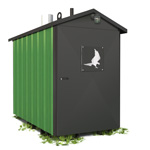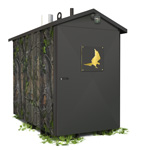Get Support
- General Inquiries
- Technical Support
- FAQ
- Browse Knowledge Base
- How-to Videos
- View an Owner's Manual
Phone
- +1 (231) 221-0104
How do I clean my Afterburner (GX Series) furnace?
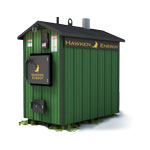
GX10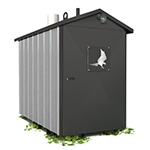
GX15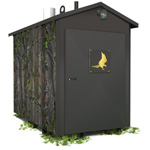
GX30
The following is a generic informational guide that we have assembled from a few different calls we have received from GX10 customers. Since they indicated that this "education" was highly beneficial, we have compiled these thoughts together and provide them to you – our objective in sharing these is to help you avoid some of the common problems people encounter, particularly as a result of not reading or understanding the GX10 owners manual! But we wanted you to have this guide for reference.
Please make sure you read through your owner's manual for the GX10. That contains most of the most important things you need to know, but please consider the following:
- First, Make sure that proper water treatment procedures are being followed. Please watch the following video which explains the process. It is simple and the lab test is FREE!
- You should probably confirm that the furnace is level. Problems like this have occurred when a furnace is not level, and particularly in cases when it is leaning towards the front. Never allow your furnace to be out of level with the low point in the front – if anything, it could be lower in the back, but only by a fraction of a degree. Level is ideal.
- The GX10 must be cleaned regularly – at least twice per month. Once every two weeks, the tubes must be cleaned. This process should take no more than 15-20 minutes as part of regular maintenance. Note that if the water jacket temp has ever been allowed to drop below 140 degrees, then this process may take longer. Watch this video for how to accomplish this – and note the process of using a cable and a pipe nipple with a cordless drill to clean the tubes. ALSO NOTE THIS IMPORTANT COMPONENT that is not stressed in the video – For pipes that are significantly clogged, the cable/drill cleaning method should be used with a vacuum hose that is inserted periodically to suck out pieces of ash and creosote that are dislodged from the inside of the pipes.
Here is the video:
Please pay very close attention to these three important cleaning tips:
- Vacuum Horizontal Tubes! – We have found that the easiest first step in cleaning the horizontal tubes is to insert into each tube a shop vac hose extension that fits just inside the tube. As you push this into the tube, you will hear the sound of ash and creosote being sucked into your shop vac quite loudly. It is a very effective first step in cleaning those tubes. Vacuum the tubes on the left side first as they accumulate more ash. Then proceed with the “Heavy Duty Wire Cleaning Tool” instructions described below.
- Heavy Duty Wire Cleaning Tool – Sometimes cleaning the tubes of the GX10 will require more strength than the 1.5” tube brush can deliver. In cases like this we offer this simple solution. A length of steel wire rope about 4' 6” (54”) long makes a great cleaning tool. Depending on the size of your drill, you can buy the right size wire to match your drill’s chuck, preferably 3/8". One end goes into the drill and the other end goes into the tubes of the GX10 to clean. Spin the drill backwards to avoid unwinding the wire. It is essential to feed the wire rope through a 30” piece of steel pipe (for example, a ¾” x 30” black pipe nipple fits a 3/8” wire rope nicely). This will help stabilize the wire rope as it spins and give you something to hold on to. You'll still need to run the 1.5” tube brush through the pipes to pull all the dust through but this tool will make the job much easier.
Watch how this is done at 3:09 on the video above. - TSP or Tri Sodium Phosphate – Also note another tip that can be used to help with this process: Many times a chimney sweep will visit a home two days before he is about to sweep a chimney and put a tablespoon of TSP on the burning wood in the fireplace or stove. TSP, or Tri Sodium Phosphate, is a cleaning product that is regularly available at hardware stores. TSP does NOT eliminate creosote, it only makes it brittle and easier to remove. Therefore, if TSP is used in your furnace, make sure to clean the tubes within 24 hours until all creosote is removed. While TSP will make creosote easier to remove, it may also cause it to swell and may possibly cause airflow restriction. Many customers use it regularly and in moderate amounts and it has not caused any problems that we know of.
ATTENTION! Do not use TSP in furnace when catalyst is in place. TSP may damage the catalyst. Without catalyst in place, furnace will produce more fine particulate emissions and may run less efficiently.
- You must NEVER operate your furnace at temps below 140 degrees. No furnace (regardless of the brand) can be operated at temps below 140 degrees – the only exception to this is during “Start-up” but that is only allowed ONCE PER YEAR in the autumn.
- The reason for this is because wood contains moisture – lots of moisture! When the furnace water is below 140 degrees, the moisture in the wood condenses on the inside walls and tubes of the furnace and that turns into large volumes of creosote. That creosote plugs up the air tubes and this PREVENTS proper air flow. When that happens, you will not get enough heat out of the furnace, and then no matter how good your wood quality is, you cannot get a good hot burn because air cannot flow through the furnace tubes!
- It is important to note that when the furnace water temp is at its normal operating temp range of 172 to 182 degrees, all the moisture from the wood that is burned off will EXIT THE FURNACE HARMLESSLY AS STEAM. But again, when the furnace water temp is below 140 degrees, that moisture condensates on the walls and tubes of the furnace. You will note that during the fall “start-up”, some water will leak out the back of the furnace upper rear door. Those water drips will stop once the furnace reaches 140 degrees and the remaining moisture that had condensed will dry up harmlessly during this once per year “start up”. Note that some customers will save some burned wood charcoal coals from the previous winter to use for start up in the fall. Such coals have already had the water burned out of them so the amount of potential creosote is greatly reduced. Then once the furnace water temp is above 140 degrees, they add seasoned wood.
We have a fun video on the topic called "Frozen? 3 Reasons to Keep your Furnace ABOVE 140 Degrees!!!" - It is also important to note that you must use “seasoned” wood. Green wood will form creosote at any temp and prevent your furnace from proper operation. Wood must be cut, split, and stacked for at least 6 months prior to attempting to burn it. I have my wood pile at my house seasoning as we speak and it will be ready by October. Regardless of how much your wood costs, be sure to purchase it sufficiently early so that YOU know that it is properly seasoned. We have learned that sadly there are many unethical people who will sell wood and represent that it is fully seasoned, when in fact it is actually green.
- Many people don’t care about efficiency – but did you know that as much as two-thirds of your wood may need to be consumed to burn off the water in a batch of green wood? I hate to think that people are burning far too much wood just because they did not allow their wood enough time to dry out. To learn more about this, check out our blog post on the topic:
- Water temps must remain in the designated range of 172 to 182. If not, this will create precisely the problem you are experiencing. On Page 3 of your Owner’s Manual, it reads: “Do not operate your furnace at temperatures below 140 degrees F except at startup and shutdown. If your heating load pulls more heat than the rated output your operating temperatures will drop below the recommended temperature range of 170 F to 182 degrees F.”
- If you are operating your furnace at temps below the designated temp range, here are some potential causes:
- Your wood is not properly seasoned so the furnace never has a chance from the start. All gasifiers require properly seasoned wood.
- The furnace must be cleaned every two weeks. Regardless of how dry and seasoned your wood is, all gasifiers require this bi-weekly cleaning. For tips on how to clean your furnace, see point #3 above. If your furnace is not cleaned regularly, or if ANY of the cleaning steps is missed, the tubes will get clogged and you will also not get proper combustion. This will lead to the furnace operating below temps of 140 degrees, and the problems that that causes will result, thus becoming a self-fulfilling prophecy!
- If your furnace is too small for your heating requirements, then it is likely that the furnace will require wood more often than you care to fill it. This can lead to running out of fuel, the furnace temp therefore drops below 140 degrees, and again, the problems that that causes.
- If your furnace ever runs out of wood, you must schedule more frequent loading times.
- Other factors affecting airflow can also be culprits, but your symptoms do not suggest any of these. Regardless, I will mention them: Your fan could be defective. This can be evaluated by simply observing the fan and feeling airflow. Also, the solenoid that lifts the damper plate can fail (sometimes if there is an electrical short in your home somewhere, this will manifest). Test this by turning on the blower fan switch on the front of the furnace and you should hear a click. Turn it off and hear a similar sound. If not, remove the fan for a visual inspection. The fan removes easily with a clip on the right side of the fan assembly – remove it slowly and be careful to note the slots on the left that the fan cover fits into.
http://blog.hawkenenergy.com/2013/12/moisture-meter.html
Make sure these things are taken care of and follow your owners manual, and you will enjoy many years of money-saving warm heat from your Hawken Furnace!
Searchable keywords: cleaning, GX Series, ash management, maintenance, Afterburner
